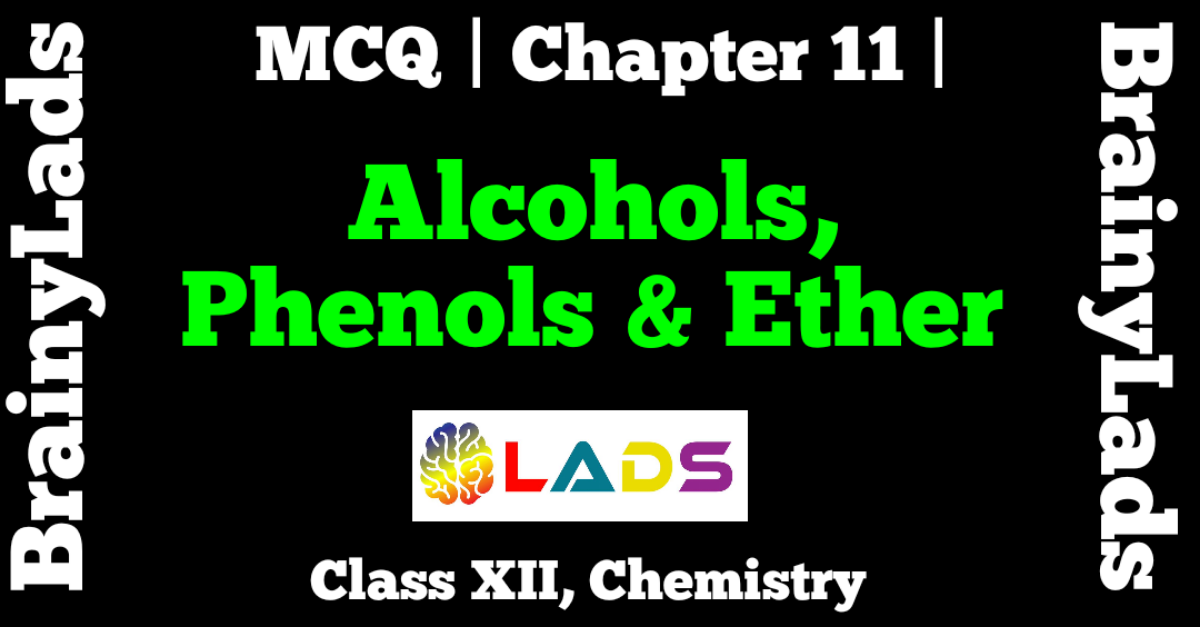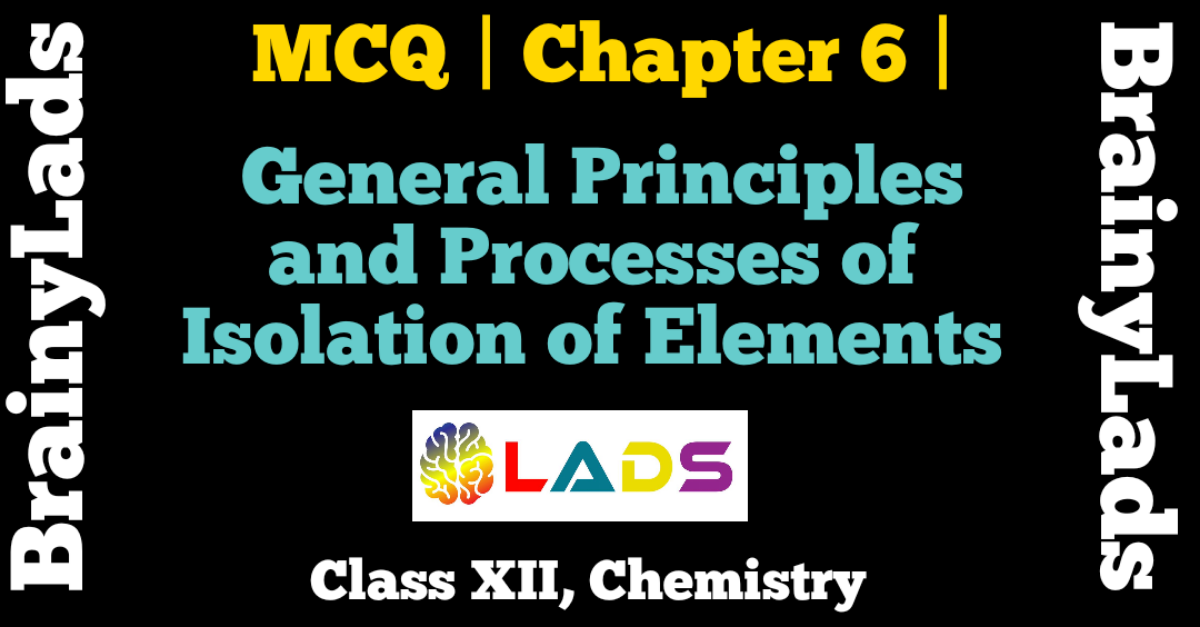MCQ of Haloalkanes and Haloarenes | Chapter 10 | Chemistry | Class 12 |
MCQ of Haloalkanes and Haloarenes | Multiple Choice Questions of Haloalkanes and Haloarenes
MCQ of Haloalkanes and Haloarenes
Question 1: Which of the following is a primary halide?
- iso-Propyl iodide
- sec-Butyl iodide
- tert-Butyl iodide
- neo-Hexyl chloride
Answer: D (neo-Hexyl halide)
Question 2: The main difference in C—X bond of a haloalkanes and haloarenes is
- C—X bond in haloalkane is shorter than haloarenes.
- In haloalkane the C attached to halogen in C—X bond is sp3 hybridised while in haloarenes it is sp2 hybridised
- C—X bond in haloarenes acquires a double character due to higher electronegativity of X than haloalkanes.
- Haloalkanes are less reactive than haloarenes due to difficulty in C—X cleavage in haloalkanes.
Answer: B ( In haloalkane the C attached to halogen in C—X bond is sp3 hybridised while in haloarenes it is sp2 hybridised )
Question 3: Which of the following can yield only monochlorinated product upon free radical chlorination?
- 2,2-Dimethylpropane
- 2-Methylpropane
- 2-Methylbutane
- n-Butane
Answer: A (2,2-Dimethylbutane)
Question 4: Bromination of methane in presence of sunlight is a
- Nucleophilic substitution
- Free radical substitution
- Electrophic substitution
- Nucleophilic addition
Answer: B (Free radical substitution)
Question 5: Tertiary alkyl halides are practically inert to substitution by SN2 mechanism because
- The carbocation formed is unstable.
- There is steric hindrance
- There is inductive effect
- The rate of reaction is faster in SN2 mechanism
Answer: B (There is steric hindrance)
You may also go through other subjects like MCQs of Biology, Physics, Chemistry, Music, Accountancy, Business Studies, Economics, Geography, Political Science & English for having a strong hold on the subject with an intent to score higher in the first term examination to be held in the month of November/December.
Question 6: Which of the following haloalkanes is most reactive?
- 1-Chloropropane
- 1-Bromopropane
- 2-Chloropropane
- 2-Bromopropane
Answer: D (2-Bromopropane)
Question 7: Which of the following haloalkanes reacts with aqueous KOH most easily?
- 1-Bromobutane
- 2-Bromobutane
- 2-Bromo-2-methylpropane
- 2-Chlorobutane
Answer: C (2-Bromo-2-methylpropane)
Question 8: 2-Bromo-3,3-dimethylbutane on reaction with aqueous KOH yields X as the major product. X is
- 2,3,3-trimethylpropan-1-ol
- 2,2-dimethylbutan-3-ol
- 2,3-dimethylbutan-2-ol
- 2,2-dimethylpropan-2-ol
Answer: C (2,3-dimethylbutan-2-ol)
Question 9: A mixture of 1-chloropropane and 2-chloropropane when treated with alcoholic KOH gives
- prop-1-ene
- prop-2-ene
- A mixture of prop-1-ene and prop-2-ene
- propanol
Answer: A (prop-1-ene)
Question 10: Chlorobenzene on treatment with on treatment with sodium in dry ether gives diphenyl. The name of the reaction is
- Fittig reaction
- Wurtz Fittig reaction
- Sandmeyer reaction
- Gattermann reaction
Answer: A (Fittig Reaction )
You may also read MCQ of The Solid State, MCQ of Solutions, MCQ of Electrochemistry, MCQ of Chemical Kinetics, MCQ of Surface Chemistry, MCQ of General Principles and Processed of Isolation of Elements, MCQ of the p-Block Elements, MCQ of the d-And f-Block Elements, MCQ of Coordination Compounds, MCQ of Alcohols, Phenols and Ether, MCQ of Aldehydes, Ketones and Carboxylic Acids, MCQ of Amines, MCQ of Biomolecules, MCQ of Polymers, MCQ of Chemistry in Everyday Life for better understanding of the chapters.
Question 11: Aryl halides are less reactive towards nucleophilic substitution reactions as compared to alkyl halides due to
- Formation of less stable carboniym ion in aryl halides
- Resonance stabilisation in aryl halides
- Presence of double bonds in alkyl halides
- Inductive effect in aryl halides
Answer: B (Resonance stabilisation in aryl halides)
Question 12: Which of the following is an example of vic-dihalide?
- Dichloromethane
- 1,2-Dichloroethane
- Ethylidene chloride
- Allyl chloride
Answer: B (1,2-Dichloroethane)
Question 13: An organic halogen which is used as refrigerant in refrigerators and air conditioners is
- BHC
- CCl4
- Freon
- CHCl3
Answer: C (Freon)
Question 14: When ethyl iodide is heated with dry silver oxide, it forms
- Ethyl alcohol
- Diethyl ether
- Silver ethoxide
- Ethyl methyl ether
Answer: B (Diethyl ether)
Question 15: iso-propyl bromide on Wurtz reaction gives
- Hexane
- Propane
- 2,3-Dimethylbutane
- Neo-hexane
Answer: C (2,3-dimethylbutane)
Question 16: Which of the following compound will have highest melting point?
- Chlorobenzene
- o-Dichlorobenzene
- m-Dichlorobenzene
- p-Dichlorobenzene
Answer: D (p-Dichlorobenzene)
Question 18: Alkyl halides are immiscible in water though they are polar because
- They react with water to give alcohols
- They cannot form hydrogen bonds with water
- C—X bond cannot be broken easily
- They are stable compounds and are not reactive.
Answer: B (They cannot form hydrogen bonds with water)
Question 19: The alkyl halide is converted into an alcohol by
- Elimination
- Dehydrohalogenation
- Addition
- Substitution
Answer: D (Substitution)
Question 20: In SN2 reactions the sequence of bond breaking and bond formation is as follows
- Bond breaking is followed by formation.
- Bond formation is followed by breaking.
- Bond breaking and formation occur simultaneously.
- Bond breaking and formation take place randomly
Answer: C (Bond breaking and formation occur simultaneously)
Question 21: Which of the following posses highest melting point?
- Chlorobenzene
- o-Dichlorobenzene
- m-Dichlorobenzene
- p-Dichlorobenzene
Answer: D (p- Dichlorobenzene)
Question 22: Which of the following event does not occur during SN2 reaction mechanism ?
- Back side attack of nucleophile
- Formation of carbonium ion
- One step continuous process
- 100 % inversion of configuration
Answer: B (Formation of carbonium ion)
Question 23: In which of the following case; halogen exchange reaction will occur ?
- R — I + NaCl
- R — F + KCl
- R — Cl + NaI
- CH3—F + AgBr
Answer: C ( R — Cl + NaI )
Question 24: Ethyne can be formed from which of the following reactant in one step
- Ethanol
- Ethanal
- Chloroform
- Ethyl bromide
Answer: C (Chloroform)
Question 25: When Chlorobenzene is treated with sodium in presence of dry ether , it gives diphenyl. This reaction is commonly known as
- Fittig Reaction
- Wurtz Fittig Reaction
- Sandmeyer reaction
- Wurtz Reaction
Answer: A (Fittig reaction)
Question 26: Bromoalkane can easily be prepared by refluxing the silver salt of fatty acid with bromine in carbon tetrachloride. This reaction is commonly known as
- Birnbaum Simonini reaction
- Borodine Hunsdiecker reaction
- Swarts reaction
- None of the above
Answer: B (Borodine Hunsdiecker reaction)
Question 27: Which of the following statement regarding boiling point of Haloalkane is incorrect?
- For the same alkyl group, boiling point decreases in the order : RI > RBr > RCl > RF
- Boiling point of chloro, bromo and iodo compounds increases as number of halogen atom increases.
- For same halogen atom boiling point increases with increase in size of the alkyl group.
- For same halogen atom boiling point decreases with increase in size of the alkyl group.
Answer: D ( For same halogen atom boiling point decreases with increase in size of the alkyl group )
Question 28: Haloalkanes on treatment with AgOH underogoes hydrolysis to yield
- Haloarenes
- Alcohols
- Aldehyde
- Carboxylic Acids
Answer: B (Alcohols)
Question 29: Substitution nucleophilic unimolecular follows ….. order kinetics.
- Second
- Third
- First
- None of the above
Answer: C (First)
Question 30: Which of the following carbocation is most reactive towards SN1 reaction ?
- Tertiary
- Secondary
- Primary
- Methyl
Answer: A (Tertiary)
Do share the post if you liked it. For more updates, keep logging on BrainyLads


